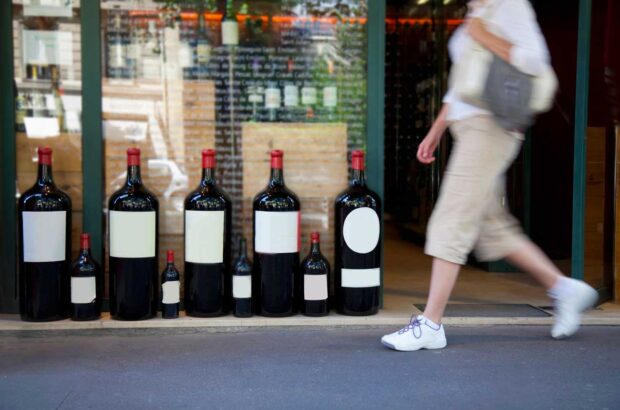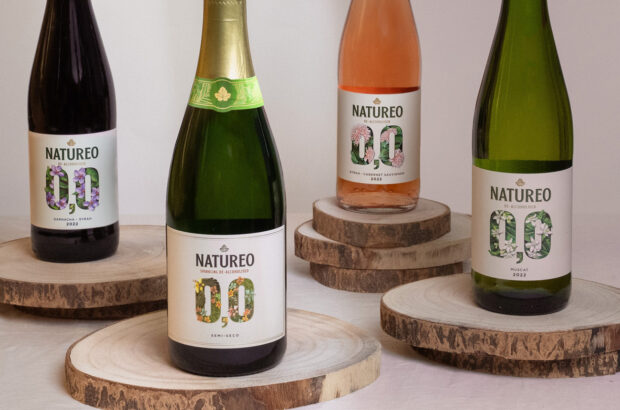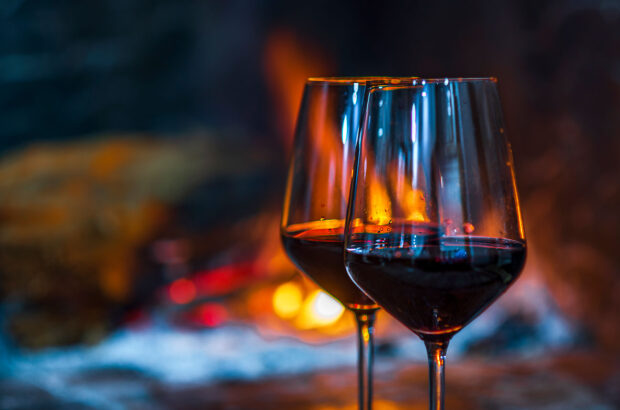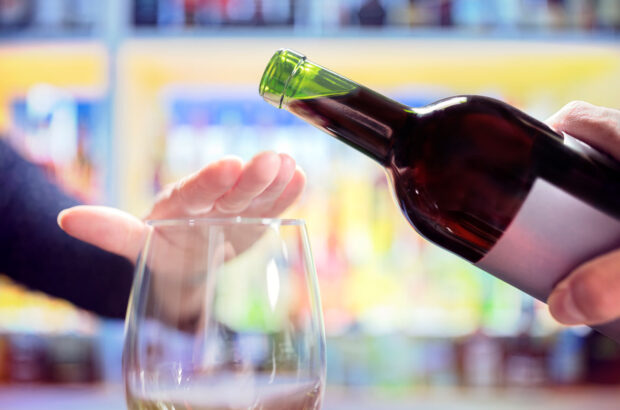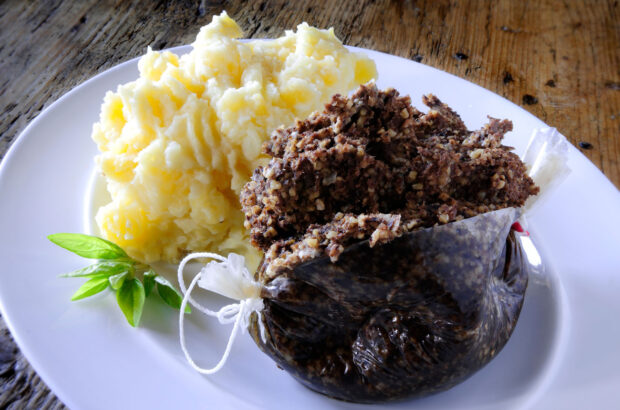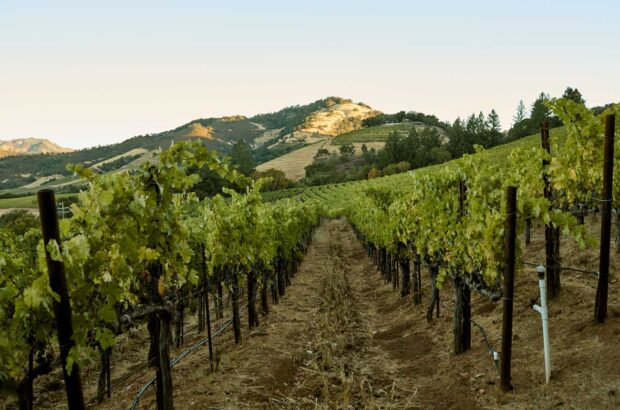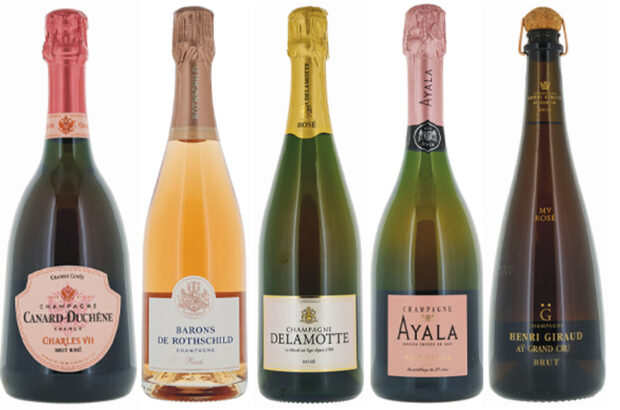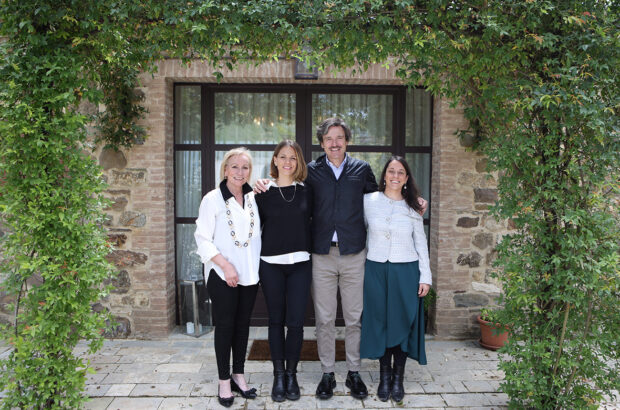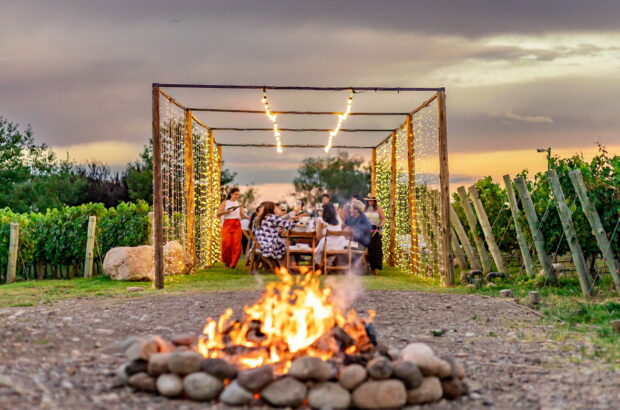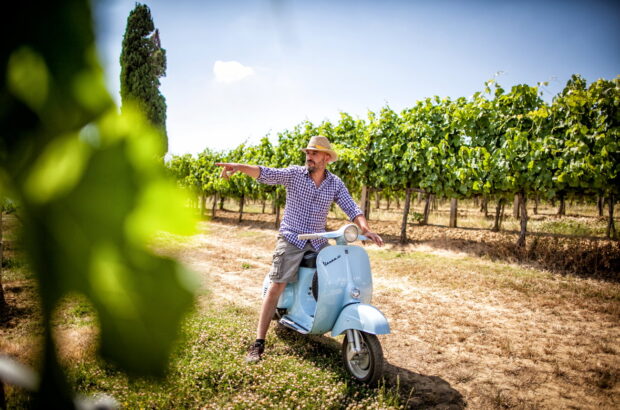Appellations of origin are regulated under a common law in the EU. You might think that they’re therefore very similar across the member states, but this is far from true. Italian appellations, for example, tend to designate specific wine styles, and their territories are often shared with other DOCs.
For example, ‘Brunello di Montalcino’ is a Sangiovese-based aged red wine, but the territory is also home to other appellations with different specifications.
In contrast, most Spanish appellations represent an individual territory, within which many different styles of wines can be made – and Rioja is a leading example of this philosophy. Under the Rioja DOCa, producers can make white, red, rosé, sparkling and sweet wines.
Scroll down to see notes and scores for 12 diverse and delicious Riojas
{"content":"PHA+SW4gYWRkaXRpb24gdG8gdGhpcywgMTQgZGlmZmVyZW50IGdyYXBlIHZhcmlldGllcyAoZml2ZSByZWQgYW5kIG5pbmUgd2hpdGUpIGFuZCBhbnkgcG9zc2libGUgbWV0aG9kIG9mIGFnZWluZyBhcmUgYWxzbyBwZXJtaXR0ZWQgd2l0aGluIFJpb2phLiBGcm9tIGEgdGVjaG5pY2FsIHBvaW50IG9mIHZpZXcgdGhpcyBtYWtlcyBzZW5zZSwgc2luY2Ugc3VjaCBhIGxhcmdlIGFuZCBkaXZlcnNlIHJlZ2lvbiBob2xkcyB0aGUgcG90ZW50aWFsIGZvciBtYW55IGRpZmZlcmVudCB3aW5lIHN0eWxlcy4gSG93ZXZlciwgZm9yIHdpbmUgbG92ZXJzLCBzbyBtdWNoIHZhcmlldHkgY2FuIGJlIGNvbmZ1c2luZy4gU28gbGV04oCZcyBleHBsb3JlIHNvbWUgb2YgdGhlIGRpZmZlcmVudCBzdHlsZXPigKY8L3A+CjxwPlRvIGhlbHAgeW91IHVuZGVyc3RhbmQgd2hhdOKAmXMgb24gb2ZmZXIsIEnigJl2ZSBsb29rZWQgYmV5b25kIHJlZCBhbmQgd2hpdGUgUmlvamFzIHRvIHRoZSBmb3VyIG1vc3QgZXhjaXRpbmcgUmlvamEg4oCYYWx0ZXJuYXRpdmVz4oCZOiBvcmFuZ2UsIGNvc2VjaGVybywgc3BhcmtsaW5nIGFuZCByb3PDqS4gSeKAmXZlIHN1bW1hcmlzZWQgZWFjaCBvZiB0aGVzZSBzdHlsZXMsIGFuZCBJ4oCZdmUgYWxzbyBjYXJyaWVkIG91dCBhIGJsaW5kIHRhc3Rpbmcgb2Ygd2luZXMgaW4gZWFjaCBzdHlsZSwgdG8gZmluZCB0aGUgYmVzdCBleGFtcGxlcyBmb3IgeW91IHRvIHRyeSBhdCBob21lLjwvcD4KPHA+PGRpdiBjbGFzcz0iYWQtY29udGFpbmVyIGFkLWNvbnRhaW5lci0tbW9iaWxlIj48ZGl2IGlkPSJwb3N0LWlubGluZS0yIiBjbGFzcz0iaXBjLWFkdmVydCI+PC9kaXY+PC9kaXY+PC9wPgo8aDI+T3JhbmdlPC9oMj4KPHA+U3RyaWN0bHkgc3BlYWtpbmcsIG9yYW5nZSB3aW5lIGlzIG5vdCBhIGNhdGVnb3J5IG9mIFJpb2phIHdpbmUsIHNpbmNlIHRoZXJlIGFyZSBubyBhcHBlbGxhdGlvbiByZWd1bGF0aW9ucyBmb3IgdGhlc2Ugc2tpbi1jb250YWN0IHdpbmVzLiBUZWNobmljYWxseSwgb3JhbmdlIHdpbmVzIGZhbGwgdW5kZXIgdGhlIGNhdGVnb3J5IG9mIOKAmHdoaXRl4oCZLCB0aG91Z2ggdGhleSBkaWZmZXIgZnJvbSB3aGl0ZSB3aW5lcyBpbiB0aGVpciBwcm9kdWN0aW9uLiBJbiB0aGUgc2ltcGxlc3QgdGVybXMsIG9yYW5nZSB3aW5lcyBhcmUgd2hpdGUgd2luZXMgdGhhdCBhcmUgbWFkZSBsaWtlIHJlZCB3aW5lcy48L3A+CjxwPkluIG90aGVyIHdvcmRzLCB0aGV5IGFyZSBwcm9kdWNlZCBmcm9tIHdoaXRlIGdyYXBlcywgYnV0IGluc3RlYWQgb2YgcHJlc3NpbmcgdGhlIGZydWl0IHF1aWNrbHkgYW5kIGZlcm1lbnRpbmcgdGhlIGp1aWNlLCB0aGUgd2luZW1ha2VyIGFkZHMgdGhlIHNraW5zLCBzZWVkcyBhbmQgc29tZXRpbWVzIHRoZSBzdGVtcyBvZiB0aGUgZ3JhcGVzIHRvIHRoZSBqdWljZS4gVGhpcyBpcyB0aGVuIGxlZnQgdG8gc29hayBmb3IgYW55dGhpbmcgZnJvbSAyNCBob3VycyB0byBzZXZlcmFsIG1vbnRocywgYWxsb3dpbmcgdGhlIGp1aWNlIHRvIGFic29yYiBjb2xvdXIgYW5kIGZsYXZvdXIgZnJvbSB0aGUgc2tpbnMgYW5kIHNlZWRzLjwvcD4KPHA+SSBibGluZC10YXN0ZWQgc2V2ZW4gb3JhbmdlIFJpb2phcyBhbmQgZm91bmQgdGhhdCB0aGUgd2luZW1ha2luZyBtZXRob2QgY2FuIG9mdGVuIGRvbWluYXRlIHRoZSBvcmlnaW4uIFBlcnNvbmFsbHksIEkgd291bGQgaGF2ZSBwcmVmZXJyZWQgdG8gZmluZCBtb3JlIFJpb2phbiBpZGVudGl0eSDigJMgYWx0aG91Z2ggdGhlIE1hbHZhc8OtYS1iYXNlZCB3aW5lIGZyb20gQWJlbCBNZW5kb3phIHRoYXQgSeKAmXZlIHJlY29tbWVuZGVkIGRvZXMgaGF2ZSBhIGNsZWFyIFJpb2phIEFsYXZlc2EgaWRlbnRpdHkuIE1lbmRvemEgaXMgYSBmaWVyeSBkZWZlbmRlciBvZiBoaXMgbGFuZOKAmXMgZGlzdGluY3RpdmUgY2hhcmFjdGVyLCBleHByZXNzaW5nIGl0IGluIGFsbCBoaXMgd2luZXMuPC9wPgo8ZGl2IGNsYXNzPSJhZC1jb250YWluZXIgYWQtY29udGFpbmVyLS1tb2JpbGUiPjxkaXYgaWQ9InBvc3QtaW5saW5lLTMiIGNsYXNzPSJpcGMtYWR2ZXJ0Ij48L2Rpdj48L2Rpdj4KPHA+SGUgY2FsbHMgdGhpcyB3aW5lIOKAmGZlcm1lbnRlZCB3aXRoIGl0cyBza2luc+KAmSByYXRoZXIgdGhhbiBvcmFuZ2UsIHRvIG1ha2UgdGhpcyBkaWZmZXJlbmNlIHF1aXRlIGNsZWFyLiBIZSBnb3QgdGhlIGlkZWEgZm9yIHRoaXMgd2luZSBhZnRlciB2aXNpdGluZyBEb21haW5lIE92ZXJub3kgaW4gSnVyYS4g4oCYVGhpcyBpcyB0aGUgdGhpcmQgeWVhciBJIGhhdmUgbWFkZSB0aGlzIHdpbmUs4oCZIGhlIHNheXMuIOKAmEkgd2FudGVkIGEgd2luZSBmcm9tIHRoZSB2aW5lIHRvIHRoZSBnbGFzcywgd2l0aCBubyBTTzIgYWRkZWQuIEkga25vdyBpdCBrZWVwcyB2ZXJ5IHdlbGwgaW4gdGhlIGJvdHRsZS7igJk8L3A+CjxoMj5Db3NlY2hlcm88L2gyPgo8cD5UaGUgcHJldmFsZW50IHN0eWxlIG9mIHdpbmVtYWtpbmcgaW4gUmlvamEgYmVmb3JlIHRoZSBNYXJxdWVzZXMgb2YgUmlzY2FsIGFuZCBNdXJyaWV0YSBicm91Z2h0IEJvcmRlYXV4IG1ldGhvZHMgdG8gdGhlIHJlZ2lvbiBpbiB0aGUgMTl0aCBjZW50dXJ5LCB3YXMgJiM4MjE2OzxlbT5jb3NlY2hlcm88L2VtPiYjODIxNjsuIFRoZSB3b3JkIGNvc2VjaGVybyBtZWFucyBncmFwZS1ncm93ZXIsIGFuZCB0aGVzZSB5b3VuZyByZWQgd2luZXMgd2VyZSBwcm9kdWNlZCBieSBncm93ZXJzIHdobyBkaWRu4oCZdCBoYXZlIGNvbnRyb2xsZWQgZmVybWVudGF0aW9uIGVxdWlwbWVudCBvciBhZ2VpbmcgZmFjaWxpdGllcy48L3A+CjxkaXYgY2xhc3M9ImFkLWNvbnRhaW5lciBhZC1jb250YWluZXItLW1vYmlsZSI+PGRpdiBpZD0icG9zdC1pbmxpbmUtNCIgY2xhc3M9ImlwYy1hZHZlcnQiPjwvZGl2PjwvZGl2Pgo8cD5UaGUgd2luZXMgYXJlIG1hZGUgdXNpbmcgYSBjYXJib25pYyBtYWNlcmF0aW9uIHN0eWxlOiB0aGUgd2hvbGUgYmVycmllcyBhcmUgbGVmdCBpbiBhbiBvcGVuLXRvcCBmZXJtZW50ZXIgYW5kIGZlcm1lbnRhdGlvbiBhY3R1YWxseSBiZWdpbnMgaW5zaWRlIHRoZSBncmFwZXMgdW50aWwgdGhlIHByZXNzdXJlIGNhdXNlcyB0aGUgc2tpbnMgdG8gYnJlYWssIHRoZW4gcmVndWxhciBmZXJtZW50YXRpb24gb2NjdXJzLiBUaGlzIHN0eWxlIGlzIHZlcnkgc2ltaWxhciB0byBCZWF1am9sYWlzIE5vdXZlYXU7IGJvdGggYXJlIG1hZGUgZm9yIGVhcmx5IGRyaW5raW5nLjwvcD4KPHA+Q29zZWNoZXJvIHdpbmVzIGFyZSB2ZXJ5IGVuam95YWJsZSBpbiB0aGVpciB5b3V0aGZ1bCBmcnVpdCBhbmQgZnJlc2huZXNzLCBidXQgYWdhaW4gZm9yIG1lLCB0aGUgd2luZW1ha2luZyB0ZW5kcyB0byB0YWtlIHByZWNlZGVuY2Ugb3ZlciBkaXN0aW5jdGl2ZSBSaW9qYW4gaWRlbnRpdHkuIFRoZSB3aW5lIEnigJl2ZSByZWNvbW1lbmRlZCBmcm9tIFJlbcOtcmV6IGRlIEdhbnV6YSBpcyBhIGdyZWF0IGV4YW1wbGUgb2YgaW5ub3ZhdGlvbiBpbiB0aGlzIHN0eWxlLiBKb3PDqSBSYW3Ds24gVXJ0YXN1biwgdGhlIHdpbmVyeeKAmXMgb3duZXIsIGlzIGFkYW1hbnQgb24gdGhlIGNydWNpYWwgZGlmZmVyZW5jZSBiZXR3ZWVuIHRoaXMgY29zZWNoZXJvIGFuZCBtb3N0IG90aGVyczogaXQgY29tZXMgZnJvbSB0aGUgYmVzdCB2aW5leWFyZHMsIHNlbGVjdGVkIGZvciBoaXMgZmFtb3VzIHJlc2VydmEuPC9wPgo8ZGl2IGNsYXNzPSJhZC1jb250YWluZXIgYWQtY29udGFpbmVyLS1tb2JpbGUiPjxkaXYgaWQ9InBvc3QtaW5saW5lLTUiIGNsYXNzPSJpcGMtYWR2ZXJ0Ij48L2Rpdj48L2Rpdj4KPHA+Rm9yIGVhY2ggZ3JhcGUgYnVuY2gsIFJlbcOtcmV6IGRlIEdhbnV6YSBrZWVwcyB0aGUg4oCYc2hvdWxkZXJz4oCZIGZvciB0aGUgcmVzZXJ2YSB3aW5lcywgYW5kIGVhcm1hcmtzIHRoZSBib3R0b20gcGFydCwgd2l0aCBmcmVzaGVyIGFuZCBsZXNzIGNvbmNlbnRyYXRlZCBncmFwZXMsIGZvciB0aGUgY29zZWNoZXJvcy4gQXMgVXJ0YXN1biBzYXlzLCDigJhUaGlzIGlzIGEgY29zZWNoZXJvIGZyb20gdG9wIHZpbmV5YXJkcywgb3VyIGx1eHVyeS4mIzgyMTc7PC9wPgo8aDI+U3BhcmtsaW5nPC9oMj4KPHA+UmlvamEgaGFzIGEgdmVyeSBsb25nIHRyYWRpdGlvbiBvZiBwcm9kdWNpbmcgc3BhcmtsaW5nIHdpbmVzIHVzaW5nIHRoZSB0cmFkaXRpb25hbCBtZXRob2QuIEluZGVlZCwgYSBzcGFya2xpbmcgTWFsdmFzw61hIDE4NDgsIG1hZGUgYnkgR2VuZXJhbCBCYWxkb21lcm8gRXNwYXJ0ZXJvIOKAkyBib3NzIG9mIE1hcnF1w6lzIGRlIE11cnJpZXRhIGF0IHRoZSB0aW1lIOKAkyByZWNlaXZlZCBhbiBhd2FyZCBhdCBhbiBhZ3JpY3VsdHVyYWwgZmFpciBpbiBNYWRyaWQgaW4gMTg1Ny4gVGhlcmUgd2FzIG5vIGNvbnRpbnVpdHkgdG8gdGhpcyBleHBsb2l0LCBidXQgdGhlIG1lcml0IGlzIHRoZXJlLjwvcD4KPHA+TWFueSB5ZWFycyBsYXRlciwgc3BhcmtsaW5nIHByb2R1Y3Rpb24gcmV2aXZlZCwgYnV0IFJpb2phIHNwYXJrbGluZyB3YXMgbWFkZSB1bmRlciB0aGUgQ2F2YSBiYW5uZXIuIEhvd2V2ZXIsIGluIDIwMTcsIHRoZSBDb25zZWpvIFJlZ3VsYWRvciBET0NhIFJpb2phIGluY2x1ZGVkIHNwYXJrbGluZyB3aW5lcyBpbiB0aGUgYXBwZWxsYXRpb24uIEl0IGludHJvZHVjZWQgcXVpdGUgZGVtYW5kaW5nIHRlY2huaWNhbCBzcGVjaWZpY2F0aW9ucyBmb3IgdGhlIHN0eWxlIOKAkyBhbmQgYWx0aG91Z2ggYSBzbWFsbCBudW1iZXIgb2Ygd2luZXJpZXMgbW92ZWQgdGhlaXIgc3BhcmtsaW5nIHdpbmVzIGZyb20gQ2F2YSB0byB0aGUgbmV3IGZyYW1ld29yayB3aXRoaW4gUmlvamEsIHRoZSBtb3N0IHNpZ25pZmljYW50IHJlc3VsdCBvZiB0aGUgY3JlYXRpb24gb2YgdGhpcyBuZXcgY2F0ZWdvcnkgaGFzIGJlZW4gdGhlIGxhdW5jaCBvZiBicmFuZCBuZXcgd2luZXMuPC9wPgo8cD5Ub2RheSwgd2luZXJpZXMgY29udGludWUgdG8gcmVzZWFyY2ggYW5kIGV4cGVyaW1lbnQgd2l0aCBzcGFya2xpbmcgd2luZSwgc28gdGhlcmXigJlzIG5vIHNpZ25hdHVyZSBSaW9qYSBzdHlsZS4gQnV0IGZyb20gbXkgYmxpbmQgdGFzdGluZyBvZiAxMCB3aW5lcywgdHdvIGNvbW1vbiBmZWF0dXJlcyBzdG9vZCBvdXQuIEZpcnN0LCB3aW5lcyBhcmUgYW1iaXRpb3VzIGluIHRlcm1zIG9mIHNpdGUgYW5kIGdyYXBlIHNlbGVjdGlvbiwgYWdlaW5nIHBlcmlvZHMgYW5kIG9yZ2Fub2xlcHRpYyBwcm9maWxlcy48L3A+CjxwPkFsbCB3aW5lcyB3ZXJlIGFnZWQgd2VsbCBpbiBleGNlc3Mgb2YgMTUgbW9udGhzLCB0aGUgbWluaW11bSByZWd1bGF0b3J5IHBlcmlvZC4gU2Vjb25kLCB0aGV5IHVzZSBuYXRpdmUgZ3JhcGUgdmFyaWV0aWVzLCB3aGljaCBzaG93cyB0aGF0IHByb2R1Y2VycyBhcmUgZ2VudWluZWx5IGxvb2tpbmcgZm9yIGlkZW50aXR5LjwvcD4KPHA+UmFmYSBWaXZhbmNvLCBvbmUgb2YgUmlvamHigJlzIGxlYWRpbmcgc3BhcmtsaW5nIHdpbmUgcHJvZHVjZXJzLCBoYXMgYSBjbGVhciB2aXNpb24gYXJvdW5kIHdoYXQgaGUgaXMgc2Vla2luZyB0byBhY2hpZXZlIHdpdGggaGlzIHdpbmVzLiDigJhJIGNvdWxkIGhhdmUgcHJvZHVjZWQgQ2F2YSwgYnV0IEkgZGVjaWRlZCB0byBnbyBmb3IgUmlvamEgc3BhcmtsaW5nIHdoZW4gdGhlIG5ldyByZWd1bGF0aW9uIGFsbG93ZWQgdGhlIHVzZSBvZiB0aGUgaW5kaWdlbm91cyB2YXJpZXRpZXMgTWF0dXJhbmEgYW5kIFRlbXByYW5pbGxvIEJsYW5jbyzigJkgaGUgZXhwbGFpbnMuIOKAmEkgYWxzbyBiZWxpZXZlIGluIGxvbmcgYWdlaW5nIHRpbWVzLCBiZWZvcmUgYW5kIGFmdGVyIGRpc2dvcmdlbWVudCzigJkgaGUgYWRkcy4gSGlzIHNwYXJrbGluZyB3aW5lcyBhcmUgbm90IHlldCBhdmFpbGFibGUgaW4gdGhlIFVLLCB1bmZvcnR1bmF0ZWx5LjwvcD4KPHA+Rm9yIG5vdywgb25seSBhIGZldyBzcGFya2xpbmcgUmlvamFzIGV4aXN0LCBidXQgbW9yZSB3aW5lcyBhcmUgbGlrZWx5IHRvIGpvaW4gdGhpcyBjYXRlZ29yeSwgd2hpY2ggaW4gbXkgb3BpbmlvbiBsb29rcyBwb2lzZWQgZm9yIHN1Y2Nlc3MuIFNvbWUgdmVyeSBnb29kIHNwYXJrbGluZyB3aW5lcyBtYWRlIGluIHRoZSByZWdpb24gYXJlIHN0aWxsIGxhYmVsbGVkIGFzIENhdmEsIGhvd2V2ZXIsIGFuZCBzb21lIHByb2R1Y2VycyBzdGF5aW5nIHdpdGggQ2F2YSBhcmUgdXNpbmcgdGhlIG5ldyBzdWItem9uZSDigJhWYWxsZSBkZWwgRWJyb+KAmSBvbiB0aGUgbGFiZWwuPC9wPgo8aDI+Um9zw6k8L2gyPgo8cD5JbiBteSBvcGluaW9uLCB0aGUgbW9zdCBleGNpdGluZyBjYXRlZ29yeSBvZiDigJhhbHRlcm5hdGl2ZeKAmSBSaW9qYSBpcyByb3PDqSwgb3Igcm9zYWRvLCB3aW5lLiBSaW9qYSBpcyBkZWZpbml0ZWx5IGEgcmVnaW9uIGZvciB0b3Agcm9zw6kgd2luZXMsIHRob3VnaCB3aXRoIHNldmVyYWwgc3R5bGVzIGJlaW5nIHByb2R1Y2VkLCB0aGVyZeKAmXMgbm8gc2luZ2xlIHJlZ2lvbmFsIGlkZW50aXR5IGZvciB0aGVzZSB3aW5lcy48L3A+CjxwPkZpcnN0IG9mIGFsbCwgdGhlcmUgYXJlIHRoZSB3aW5lcyBmcm9tIENvcmRvdsOtbiwgYSB2aWxsYWdlIGluIFJpb2phIEFsdGEgZGlzdGluZ3Vpc2hlZCBieSB0aGUgcXVhbGl0eSBvZiBpdHMgY29vbC1jbGltYXRlIEdhcm5hY2hhIGdyYXBlcy4gVGhlc2Ugcm9zw6lzLCBhIG1vZGVybiB0YWtlIG9uIFJpb2ph4oCZcyB0cmFkaXRpb25hbCDigJg8ZW0+Y2xhcmV0ZTwvZW0+4oCZIHN0eWxlLCBhcmUgb2Z0ZW4gdG9wLXF1YWxpdHkgd2luZXMgd2l0aCBhZ2VpbmcgcG90ZW50aWFsIGFuZCB1bmlxdWVuZXNzIOKAkyB0aGF0IHJhcmVzdCB3aW5lIGF0dHJpYnV0ZS48L3A+CjxwPlRoZXkgYmVuZWZpdCBmcm9tIGJvdGggbGVlcyBjb250YWN0IGFuZCBvYWsgYWdlaW5nLiBIb25vcmlvIFJ1YmlvLCAyMjAgQ8OhbnRhcmFzLCBWYWxjdWVybmEgYW5kIEZsb3JlbnRpbm8gTWFydMOtbmV6IGFyZSBuYW1lcyB0byBrZWVwIGluIG1pbmQuPC9wPgo8cD5UaGVuIHRoZXJlIGFyZSB0aGUgcm9zw6lzIGFnZWQgZm9yIGEgbnVtYmVyIG9mIG1vbnRocyBvciB5ZWFycyBpbiBvYWsgYmFycmVscywgbWFkZSBpbiBSaW9qYSBBbHRhIGFuZCBSaW9qYSBBbGF2ZXNhLiBUaGlzIHN0eWxlIGlzIGFsbW9zdCBleGNsdXNpdmUgdG8gUmlvamEsIHdpdGggaXRzIGRpc3RpbmN0aXZlIGFuZCBlbGVnYW50IG94aWRhdGl2ZSBjaGFyYWN0ZXIsIG1vcmUgb3IgbGVzcyBzdWJ0bGUgb2FrIGluZmx1ZW5jZSBhbmQsIGluIHRoZSBiZXN0IGNhc2VzLCBleHRyZW1lbHkgbG9uZyBmaW5pc2guPC9wPgo8cD5UaGVzZSB3aW5lcyBhcmUgbWFkZSB0byBpbXByb3ZlIGluIGJvdHRsZSwgYW5kIHdpdGggdGhlaXIgaWRpb3N5bmNyYXRpYywgbG92ZS1pdC1vci1oYXRlLWl0IHByb2ZpbGVzLCBhcmUgYWJzb2x1dGVseSB1bmlxdWUuIFIgTMOzcGV6IGRlIEhlcmVkaWEgaXMgdGhlIGhpc3RvcmljIGxlYWRlciBpbiB0aGlzIGNhdGVnb3J5LCBidXQgc29tZSBuZXdlciBwcm9kdWNlcnMgYXJlIHNlcmlvdXNseSBjb21wZXRpbmcgd2l0aCBpdC48L3A+CjxwPkEgdGhpcmQgc3R5bGUgaXMgaW5zcGlyZWQgYnkgUHJvdmVuY2U6IGRlbGljYXRlLCB3aXRoIHN1YXZlIGZydWl0IGFuZCBsb3RzIG9mIGZyZXNobmVzcywgYW5kIHZlcnkgcGFsZSBpbiBjb2xvdXIuIFRoZSBiZXN0IGFyZSBkZWxpY2lvdXM6IHRoZXkgYXJlIG1hZGUgdG8gYmUgZHJ1bmsgeW91bmcgYW5kIHRlbmQgdG8gYmUgcHVyZSBHYXJuYWNoYSwgb3IgYmxlbmRzIG9mIEdhcm5hY2hhIGFuZCBWaXVyYS4gRm9yIHByb2R1Y2VycyB0byBzdWNjZWVkIHdpdGggdGhpcyBzdHlsZSByZXF1aXJlcyBwbGVudHkgb2Ygd2luZW1ha2luZyBrbm93LWhvdyBhcyB3ZWxsIGFzIHRvcCBlcXVpcG1lbnQgaW4gdGhlIHdpbmVyeS48L3A+CjxwPkFjcm9zcyB0aGVzZSB0aHJlZSBzdHlsZXMgdGhlcmUgaXMgYSBjcnVjaWFsIHF1YWxpdHkgcmVxdWlyZW1lbnQ6IHRoZSBiZXN0IHdpbmVzIGFyZSBtYWRlIHdpdGggZ3JhcGVzIGZyb20gdmluZXlhcmRzIGV4Y2x1c2l2ZWx5IGRlZGljYXRlZCB0byByb3PDqSBwcm9kdWN0aW9uLiBUaGVyZSBhcmUgbm8gc2hvcnRjdXRzIHRvIHF1YWxpdHkgaGVyZSwgbm9yIGFyZSB0aGVyZSBjaGVhcCBzb2x1dGlvbnMuPC9wPgo8cD5Qcm9kdWNlcnMga25vdyB0aGlzLCBzbyBtb3N0IHRvcCB3aW5lcyByZWZlciB0byBhIHBhcnRpY3VsYXIgdmluZXlhcmQuIE90aGVyIHdpbmVzIHdpbGwgYmUgcG9zaXRpb25lZCBxdWl0ZSBoaWdoIGluIGEgcHJvZHVjZXLigJlzIHBvcnRmb2xpbywgZGVtb25zdHJhdGluZyB0aGUgY29zdCBhbmQgdGhlIGVmZm9ydCByZXF1aXJlZCB0byBwcm9kdWNlIGEgZ3JlYXQgUmlvamEgcm9zw6kuPC9wPgo8cD5NYXJxdcOpcyBkZSBNdXJyaWV0YSB3aW5lbWFrZXIgTWFyw61hIFZhcmdhcyBmb3VuZCBhIGdlbmlhbCBzb2x1dGlvbiB0byB0aGUgaXNzdWUgb2YgcmVnaW9uYWwgaWRlbnRpdHkgd2hlbiBzaGUgZGVkaWNhdGVkIGEgTWF6dWVsbyB2aW5leWFyZCBhdCB0aGUgd2luZXJ54oCZcyBZZ2F5IHNpdGUgdG8gcm9zw6kuIFRoZSByZXN1bHQgd2FzIGFuIGV4dHJlbWVseSBvcmlnaW5hbCB3aW5lLiBOb3csIG90aGVyIHByb2R1Y2VycywgaW5jbHVkaW5nIExhbG9tYmEsIGFsc28gaGF2ZSBkZWRpY2F0ZWQgcm9zw6kgdmluZXlhcmRzLjwvcD4KPGgyPkEgZHluYW1pYyBmdXR1cmU8L2gyPgo8cD5JbiBjb25jbHVzaW9uLCB0aGVyZSBpcyBzbyBtdWNoIG1vcmUgaGFwcGVuaW5nIGluIFJpb2phIHRoYW4gb2FrLWFnZWQgcmVkcyBtYWRlIHdpdGggVGVtcHJhbmlsbG8uIFNvbWUgY2F0ZWdvcmllcywgc3VjaCBhcyByb3PDqSwgaGF2ZSBhbHJlYWR5IGVzdGFibGlzaGVkIHRoZW1zZWx2ZXMgYW5kIG90aGVycyBhcmUgb24gdGhlaXIgd2F5LCBub3RhYmx5IHNwYXJrbGluZy4gVGhlIHF1YWxpdHkgb2YgdGhlIGZpcnN0IGNvaG9ydCBpcyB2ZXJ5IGdvb2QsIGJ1dCBpdCB3b3VsZCBiZSBnb29kIHRvIHNlZSBtb3JlIHByb2R1Y2VycyBjb21lIG9uIGJvYXJkLjwvcD4KPHA+Q29zZWNoZXJvIHdpbmVzLCBpbiB0aGUgbWVhbnRpbWUsIGFyZSBzZWVpbmcgc29tZXRoaW5nIG9mIGEgcmV2aXZhbCwgZ2l2ZW4gY29uc3VtZXIgZGVtYW5kIGZvciB5b3VuZyB1bm9ha2VkIHdpbmVzLjwvcD4KPGRpdiBjbGFzcz0iaW5qZWN0aW9uIj48L2Rpdj4KPHA+T3JhbmdlIHdpbmUgaXMgYSBuZXdjb21lciBpbiBSaW9qYS4gVGhlcmUgaXMgZ29vZCBwb3RlbnRpYWwgaW4gdGhpcyBjYXRlZ29yeSwgc2luY2Ugc29tZSBSaW9qYSB3aGl0ZSBncmFwZSB2YXJpZXRpZXMgaGF2ZSBkZW1vbnN0cmF0ZWQgZXhjZWxsZW50IHF1YWxpdGllcyBpbiB0aGVpciBza2lucywgYnV0IHRoZXJlIGlzIG5vdCB5ZXQgYSBzdHJvbmcgcHVzaCBmb3IgaXQuPC9wPgo8cD5XaGlsZSBtYW55IG9mIHRoZSBvcmFuZ2Ugd2luZXMgcHJvZHVjZWQgaGVyZSB0ZW5kIHRvIGxhY2sgUmlvamFuIGlkZW50aXR5LCBhIGZldyBwcm9kdWNlcnMgaGF2ZSBmb3VuZCBhIHdheSBvZiBleHByZXNzaW5nIGdlbnVpbmUgUmlvamEgb3JhbmdlIHdpbmVzOiBBYmVsIE1lbmRvemEgaXMgb25lIG9mIHRoZSBiZXN0IGV4YW1wbGVzLjwvcD4KPHA+Cg=="}
Something new: different Rioja wines to try at home
{}
{"wineId":"84229","displayCase":"standard","paywall":true}
{"wineId":"84230","displayCase":"standard","paywall":true}
{"wineId":"84231","displayCase":"standard","paywall":true}
{"wineId":"84232","displayCase":"standard","paywall":true}
{"wineId":"84233","displayCase":"standard","paywall":true}
{"wineId":"84237","displayCase":"standard","paywall":true}
{"wineId":"84234","displayCase":"standard","paywall":true}
{"wineId":"84235","displayCase":"standard","paywall":true}
{"wineId":"84236","displayCase":"standard","paywall":true}
{"wineId":"84238","displayCase":"standard","paywall":true}
{"wineId":"84239","displayCase":"standard","paywall":true}
{"wineId":"84240","displayCase":"standard","paywall":true}
{}
Related articles



